You scout the rapid, you get back in your kayak and wait to be signalled down. You look up and get mesmerised by how beautiful the leaves of the tree above you look in the autumn light. Suddenly a whistle blows and you are brought back into reality. It is time for you to leave the eddy, but you cannot remember the line you just scouted. Feelings of embarrassment and frustration well up. You don’t know whether you should you admit you’ve already forgotten the line or just go down the rapid and hope for the best. Does this scene sound familiar?
October is ADHD Awareness Month. Like many adventure sports, white water kayaking attracts a high number of people who are neurodivergent. Whether they are diagnosed or not, paddlers who show traits of ADHD may struggle with attention, impulsivity, managing emotions and more whilst out paddling.
This article explores five common ADHD traits, how they show up on the river, both positively and negatively, and offers practical tips for managing them. It’s not a clinical guide, but a personal reflection shaped by my own journey and the experiences of friends who I paddle with.
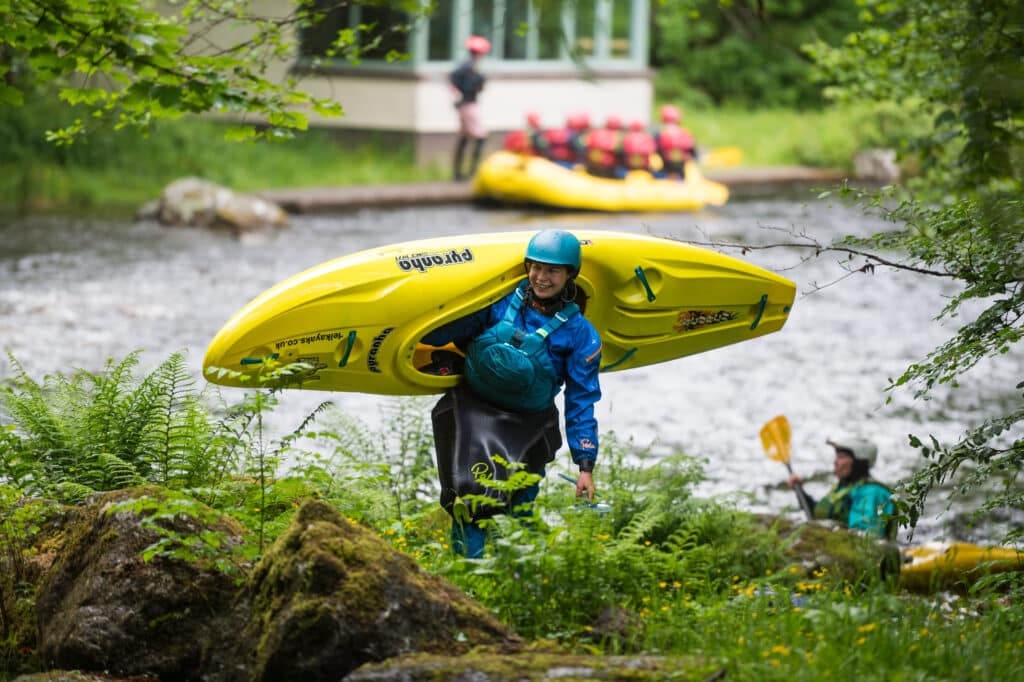
What is ADHD and why this article?
ADHD isn’t just about being unable to sit still. It’s a neurodevelopmental condition marked by patterns of inattention, impulsivity, and hyperactivity. How those traits show up varies widely from person to person. For years, I thought ADHD was something “naughty boys” had. That’s what I was told at school. Girls like me – quiet, high achieving, anxious, often slipped under the radar. I now work in education myself and can see exactly how varied ADHD can present in different people.
It wasn’t until adulthood, through therapy and reflection, that I began to recognize ADHD traits in myself. I started therapy to try and better manage my anxiety which felt like it was having an increasingly negative impact on my life. My therapist asked me early on in our sessions if I had ever be assessed for ADHD and got me to complete a screening questionnaire.
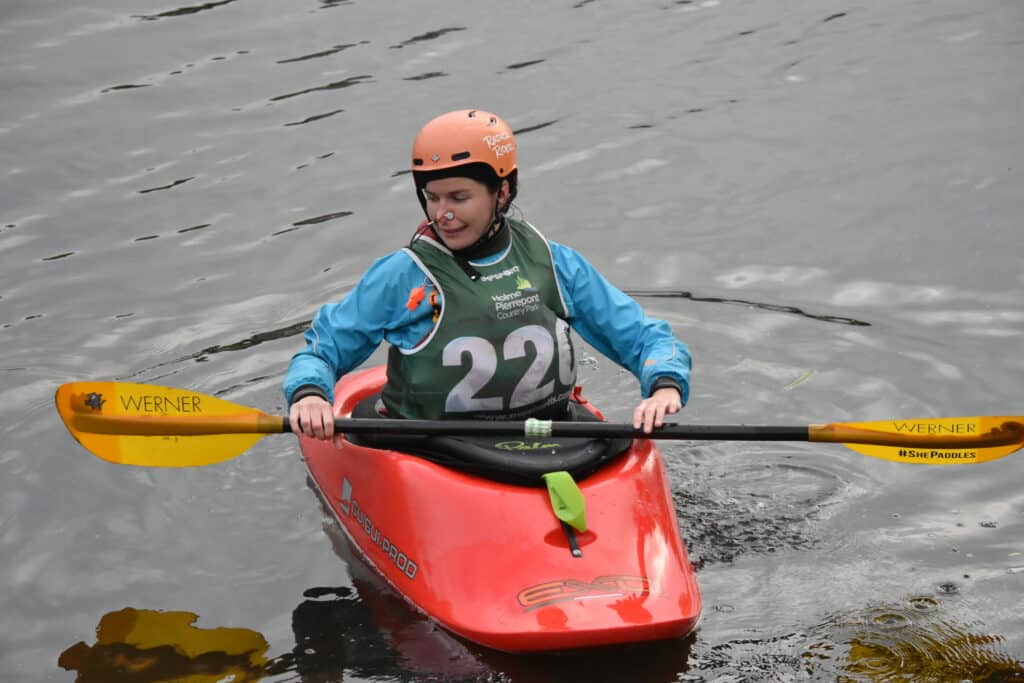
The questionnaire scores suggested looking into an assessment but when I followed this path, the barriers to being assessed for ADHD were steep. Anyone who has looked into pursuing a diagnosis will know that if you try to go through the NHS, the waiting lists are years long and if you go privately, they are beyond expensive. I spoke to a psychologist who told me, ‘you are a girl who did well in school, you will not get a diagnosis’ and so I left it at that.
I reflected on this and decided that I didn’t need a label to start learning. I read, listened, reflected, and began to understand how my brain worked and how showing these traits was affecting my life, especially on the river. ADHD diagnosis or not, I was determined that I wanted to get better at managing myself in order to lead a happier life.
This article is for anyone who’s ever felt “too much” or “not enough” in outdoor spaces. It’s a personal exploration of five ADHD traits, how they show up in kayaking both positively and negatively, and how we can work with them and not against them. Whether you’re diagnosed, self-identifying, or simply curious, I hope this piece offers some insight, validation, and a few practical and hopefully helpful suggestions.
1. Heightened emotions
The positives
For many paddlers with ADHD, emotions are heightened and felt fully. This means when they are excited, they are EXCITED. When they feel joy, they are euphoric. That kind of emotional intensity can be contagious in the best way possible.
They will find joy in the smallest details of the day and help you to open your eyes to see it too. They might appreciate the beauty of paddling at sunset, or the excitement of paddling in a storm. Every wave becomes exciting and every eddy line has so much potential for fun. They feel the moment fully and the joy lasts longer. Paddling with someone who brings that kind of spark and energy is fun. Helping others to share that joy is a gift that those with ADHD are often willing to share.

The challenges
Heightened emotions cut both ways. When something goes wrong, a missed line, a swim, a harsh word, it can feel overwhelming. A single mistake might be fixated on, casting a shadow over an otherwise brilliant day. Many people with ADHD struggle with perfectionism and having an ‘all or nothing’ mindset. It can be hard once you start to dwell on that single mistake to think of anything else.
tips to manage it
When I find myself spiralling over a small setback, I try to rebalance my perspective. I ask myself the following questions.
- Will this matter in a week, a month, or a year?
- Would I judge someone else as harshly for the same mistake?
Usually, the answers help to rebalance your perspective on how bad the mistake actually was and lead you to be kinder in how you treat yourself over it.
Another strategy I use is listing the good and the bad things from the day. If the ‘bad’ column has one entry and the ‘good’ column has twenty, that’s a clear sign the day was a win overall. Sometimes, just writing it down and seeing the comparison with my own eyes helps my brain believe it.
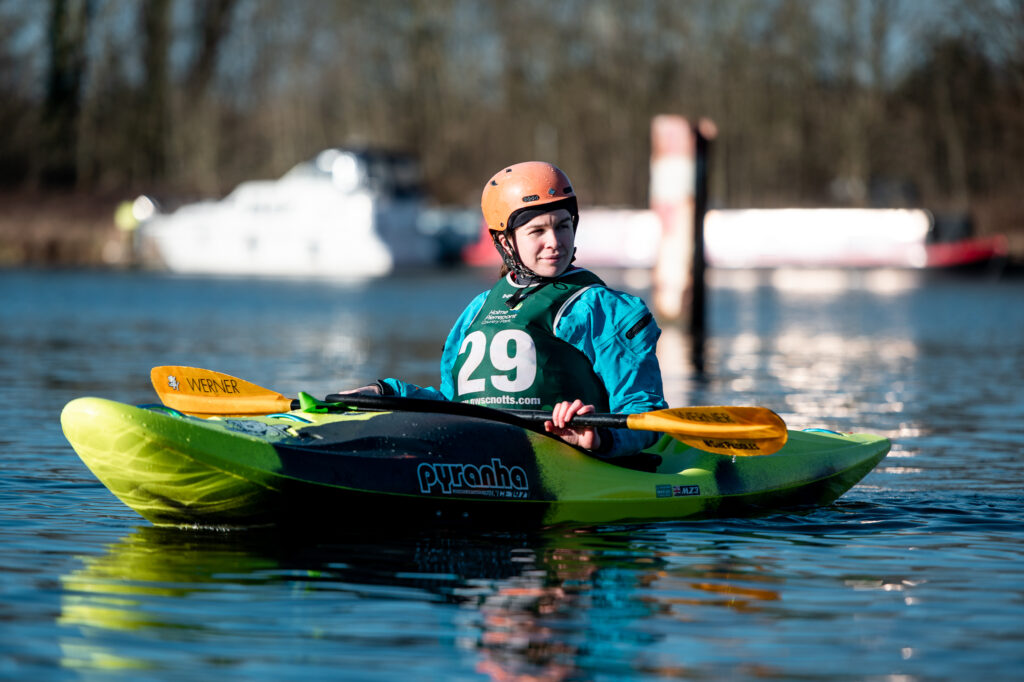
2. Hyperfocus
The positives
While people often associate ADHD with distractibility, many people with ADHD can experience periods of intense focus, especially when something sparks their interest. This is known as hyperfocus.
When I bought a playboat during the pandemic, it became my whole world. I was at my local white water course constantly, obsessed with making progress and learning specific skills. That obsession gave me purpose and joy. My playboat obsession lasted for a good year. Every new kayaking skill I’ve learned has followed the same pattern: total immersion, an obsessive pursuit of opportunities to practice that skill and a deep sense of fulfilment.
Many paddlers with ADHD thrive in these bursts of hyperfocus. It’s one of the reasons that I think some people will refer to having ADHD as ‘having a superpower’. When the hyperfocus is aligned with something meaningful, the growth that comes out of it can be extraordinary.
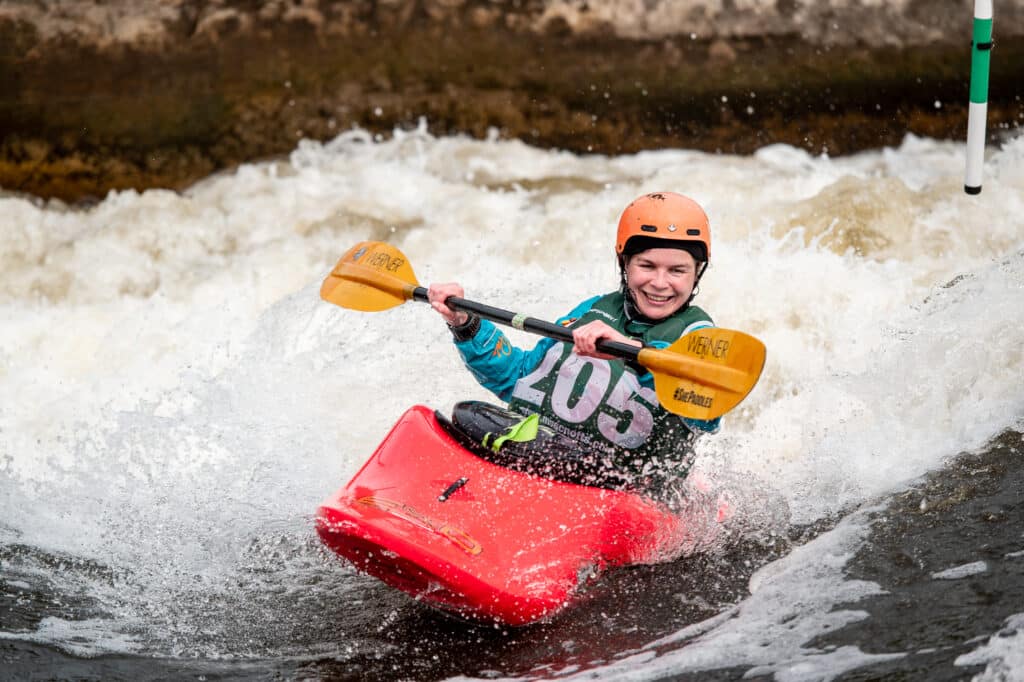
The challenges
But hyperfocus doesn’t last forever. One day, sometimes quite suddenly, the spark fades. I’ve only been in a playboat three times in the last three years. Five years ago, I was in it three times a week.
For me, the shift is usually harmless – a quiet fading of interest. As I am writing this, I am looking at my white water SUP that I became fixated in learning to paddle 3 years ago but now have zero interest in ever paddling it again. It doesn’t matter massively – I will most likely sell the SUP and life will move on.
For some friends, the sudden loss of interest can be more disruptive. I’ve watched people pour their hearts into outdoor jobs, relationships, or big life changes, only to wake up one morning and feel… done. The passion vanishes overnight, and with it, motivation. You can’t predict when you will lose interest in something and once you do, it’s hard to fake enthusiasm or push through.
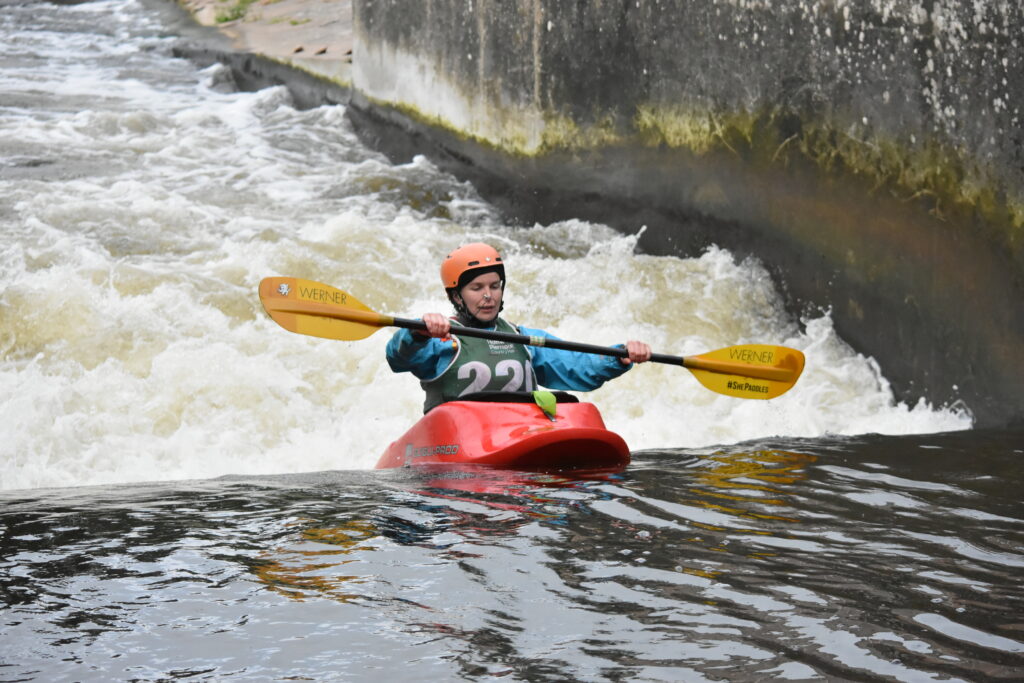
tips to manage it
I’m lucky to have my husband Tom, who is calm, patient, and grounding. When I lose interest in something, my instinct is to act fast: quit the job, sell the gear, end the relationship. Tom’s gentle “just wait” has saved me more times than I can count.
Now, I try to pause before making big decisions (usually after Tom reminds me to). I give myself time, days, sometimes weeks, to sit with the decision. More often than not, the urge passes, and I’m grateful I didn’t act on impulse.
If you’re prone to hyperfocus and sudden shifts in motivation and desires, my advice would be to build in buffers. Lean on trusted people and force yourself to create space between thought and action. That pause and making yourself ‘just wait’ can sometimes avoid a irreversible decision being made because of temporary frustration rather than an actual desire for change.
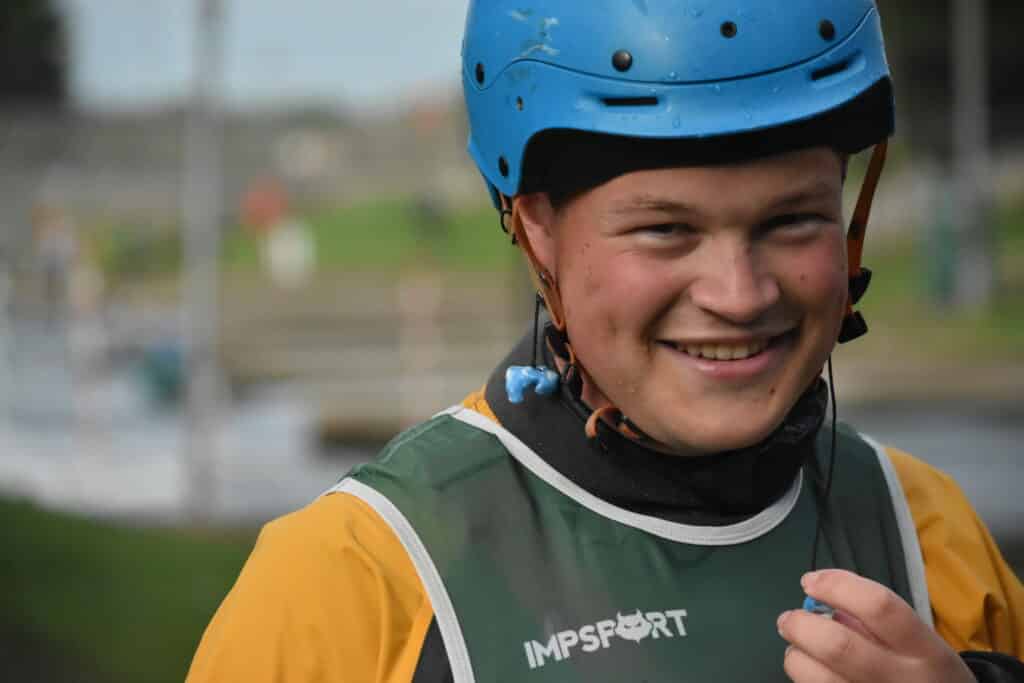
3. Inattention and a racing mind
The positives
A friend once told me that when he goes to sleep, he would just stop thinking. I stared at him in disbelief. For me, thoughts tumble endlessly, leaping from one idea to the next, often with no clear connection. It wasn’t until adulthood that I realised not everyone’s brain works like this. If I have one reoccurring wish in life, it’s that I could switch my brain off, especially when I am trying to sleep!
This constant stream of thoughts can be exhausting, but it also fuels creativity. People with ADHD often think outside the box, connecting ideas in unexpected ways. On the river, that kind of quick thinking can be a gift. When things go wrong, you need someone who can assess, adapt, and act fast. I’ve seen paddlers with racing minds make split second decisions that kept a situation from escalating. In high pressure moments, that mental agility can be life saving. The outdoors industry is full of people with ADHD and I genuinely think we are all the better for it.
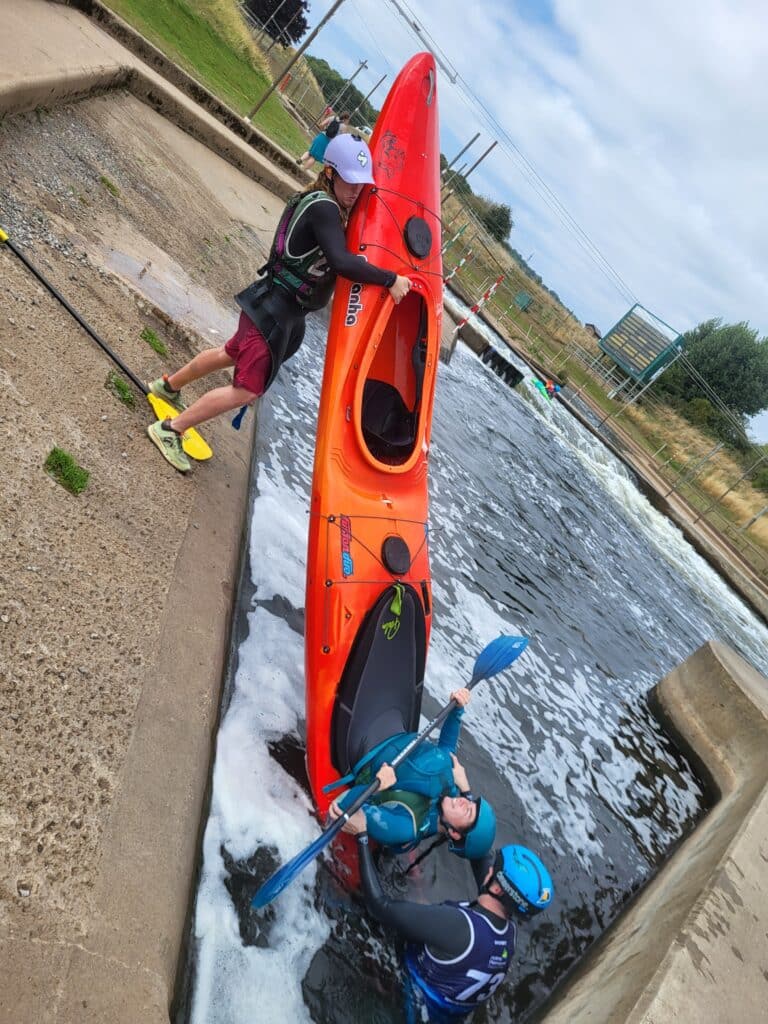
The challenges
Unfortunately the same trait that helps in a crisis can cause chaos in calmer moments. You scout a rapid, get back in your boat… and forget the line. You’re about to drop in when an impulsive thought suddenly pops into your head and you lose focus
As I wrote in the opening, I once sat above a rapid, mesmerised by the way sunlight filtered through the trees. A whistle snapped me back to reality and told me it was time to paddle. I couldn’t remember the line but I paddled anyway. A boulder signalled the start of the rapid. I knew it was left or right but I couldn’t remember which one and so I guessed. I guessed wrong. Whilst I stayed upright, but the line was messy, and I felt embarrassed. I’d seen the boulder. I just couldn’t recall what it meant.
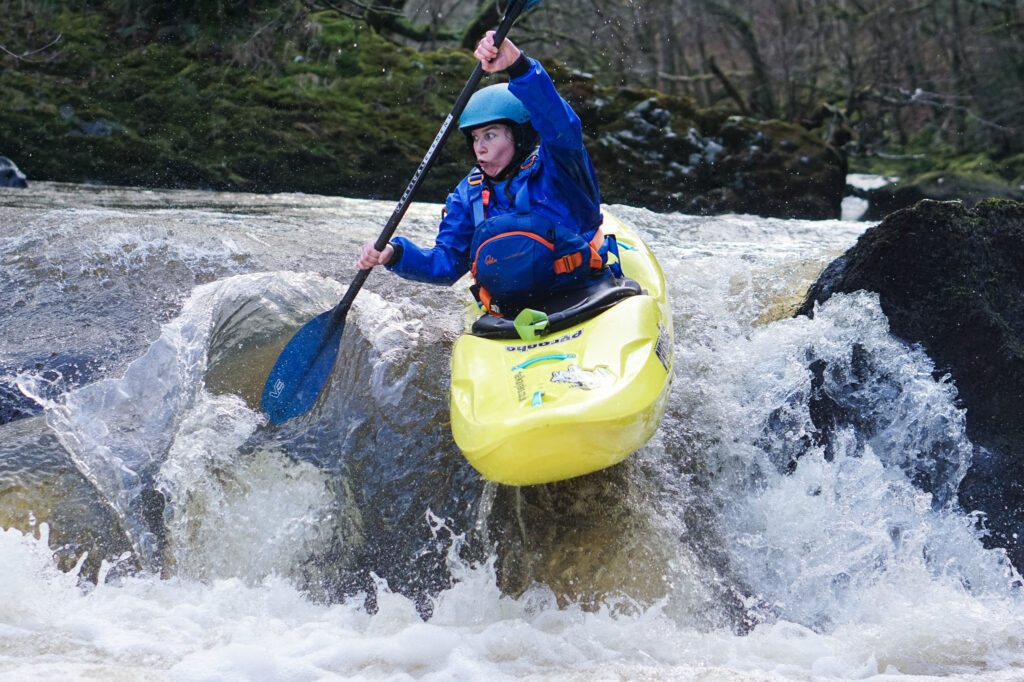
tips to manage it
I used to hide my distraction, afraid of seeming careless. But over time, I’ve learned to speak up. Now, I double check the line with friends before dropping in, even if that means I feel silly. My friends tease me sometimes, but they always help, and that support makes all the difference.
One practical trick: I often take a photo of the rapid while scouting. Again, friends tease me about the photos and that I am doing it for Instagram but it is more than that. It is reassurance. I don’t always need to double check the photo before paddling but I know it’s there if I need it. That itself gives me confidence.
I also give myself permission to pause. Before leaving the eddy, I take a breath, make sure I am happy with my gear, and mentally rehearse the line. That moment of calm helps quiet the noise and sharpens my attention – at least for a while.
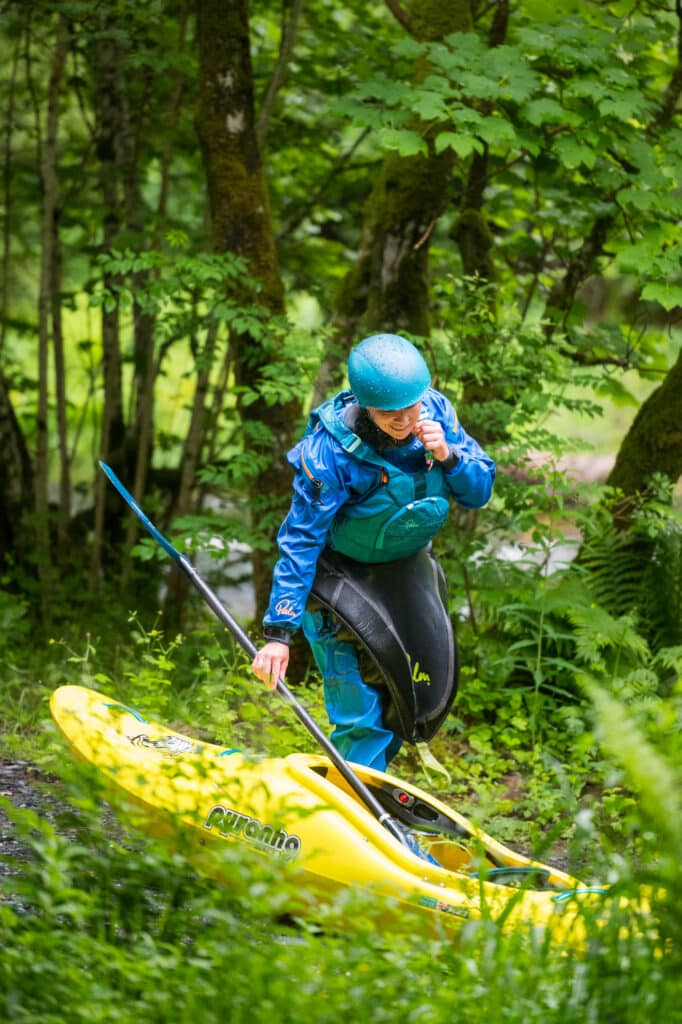
4. Risk taking and impulsivity
The positives
Impulsivity is often seen as a negative trait but in the right context, it can lead to some of the most unforgettable adventures. Some of my best days on the river began with a spontaneous “Why not?” This might have been a last minute trip, an unplanned detour, or a bold decision to paddle something new.
In kayaking, impulsivity can fuel courage. It helps you say yes to challenges, push past hesitation, and embrace the unknown. That instinct to say yes and not overthink the decision can lead to joy, exciting adventures and stories you’ll tell for years. For paddlers with ADHD, that boldness can be a powerful asset, especially when paired with experience and the right group of people.
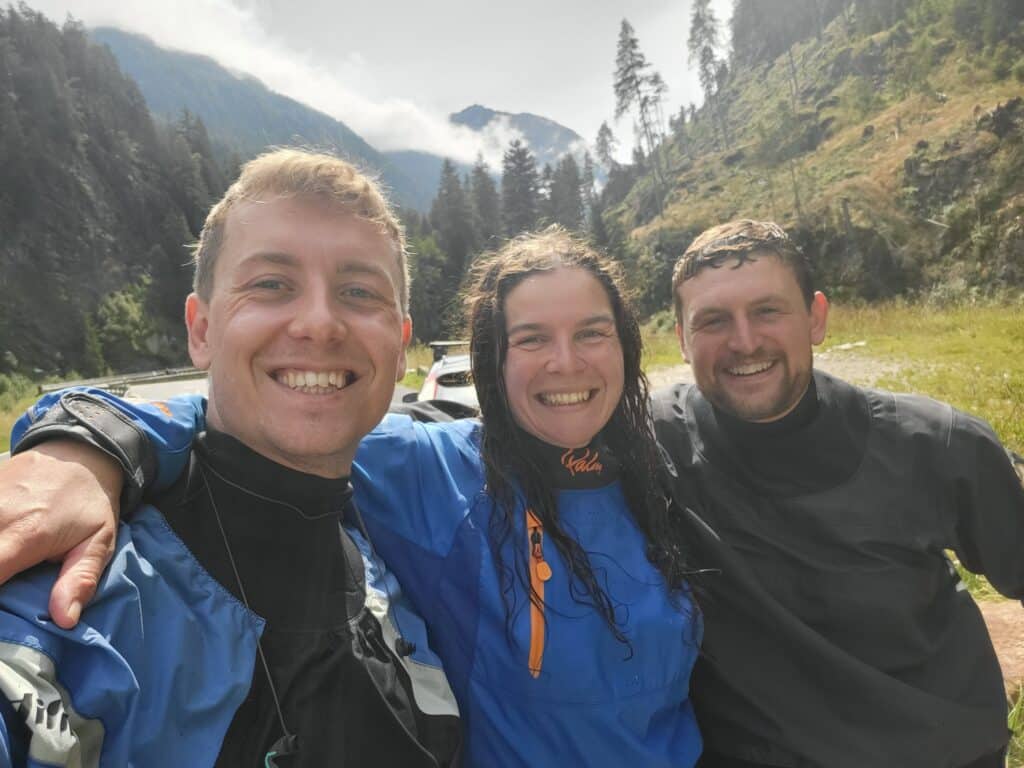
The challenges
Unfortunately impulsivity can lead to some less enjoyable experiences too. It can lead to rushing decisions, skipping safety checks, or paddling something you’re not ready for. I’ve been halfway in my kayak at the get on before when someone has reminded me we haven’t run the shuttle. Over the years, I’ve seen friends forget gear, leave keys in the car, or jump into rapids without scouting which hasn’t always ended well.
These are moments that feel “absent-minded” but are often rooted in impulsivity. Sadly, these lapses aren’t just inconvenient, they can be dangerous. ADHD brains crave stimulation and novelty, which sometimes overrides caution. Recognising that pattern is key to staying safe.
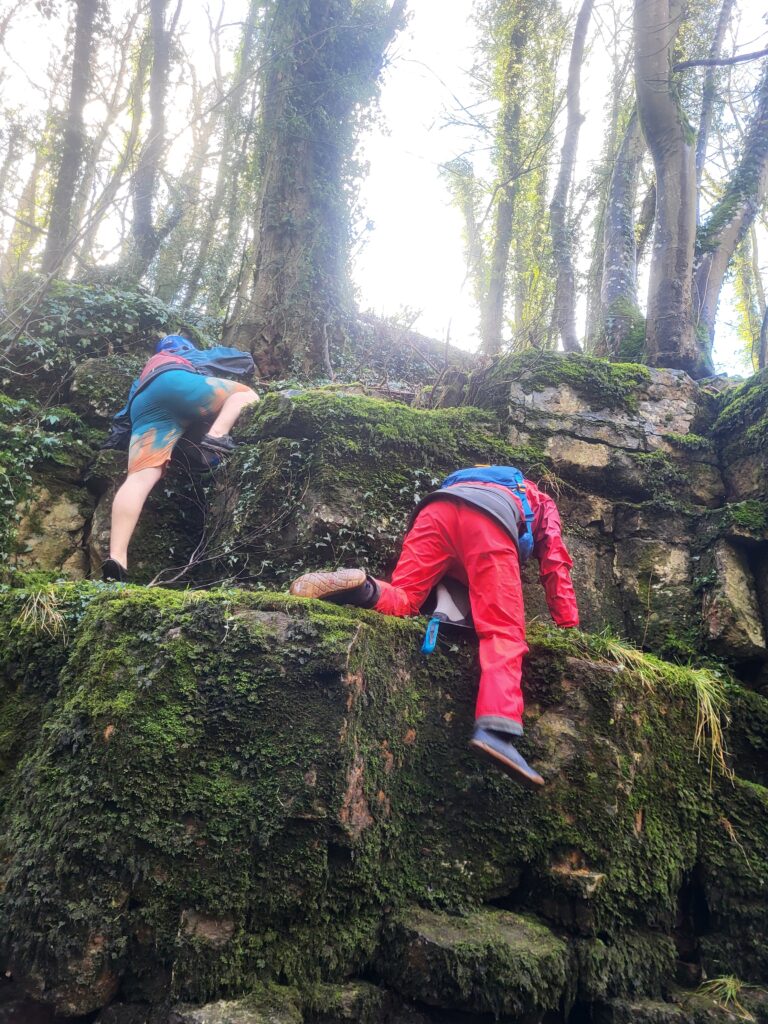
tips to manage it
Awareness of your own impulsivity as well as that of your river friends is the first step to combating it. I know I’m impulsive and impatient, so I build in safeguards. Routines help. For example, singing “Heads, shoulders, knees and toes” to check I have my helmet, BA, skirt, and shoes before getting on the river. It’s silly, but it works.
I also lean on my paddling crew. We make it a shared responsibility to check for keys, shuttle pins, and gear. Three people asking “Do you have your keys?” is better than one.
On the water, I force myself to pause. After a portage, I wait until everyone’s ready before leaving the eddy. I check in with the group before charging ahead. Building in routines and habits has helped smooth river days for me over the years.
Being impulsive doesn’t mean being reckless. With the right systems and support, it can be a source of spontaneity, courage, and joy. I used to rush to get onto paddle a rapid when I was feeling scared. Now when I am nervous, I recognise this and try to proceed with caution. I check in with my friends and slow my decision making down. It is not always easy but sometimes literally saying out loud ‘stop. You need to take this slowly’ really does help.
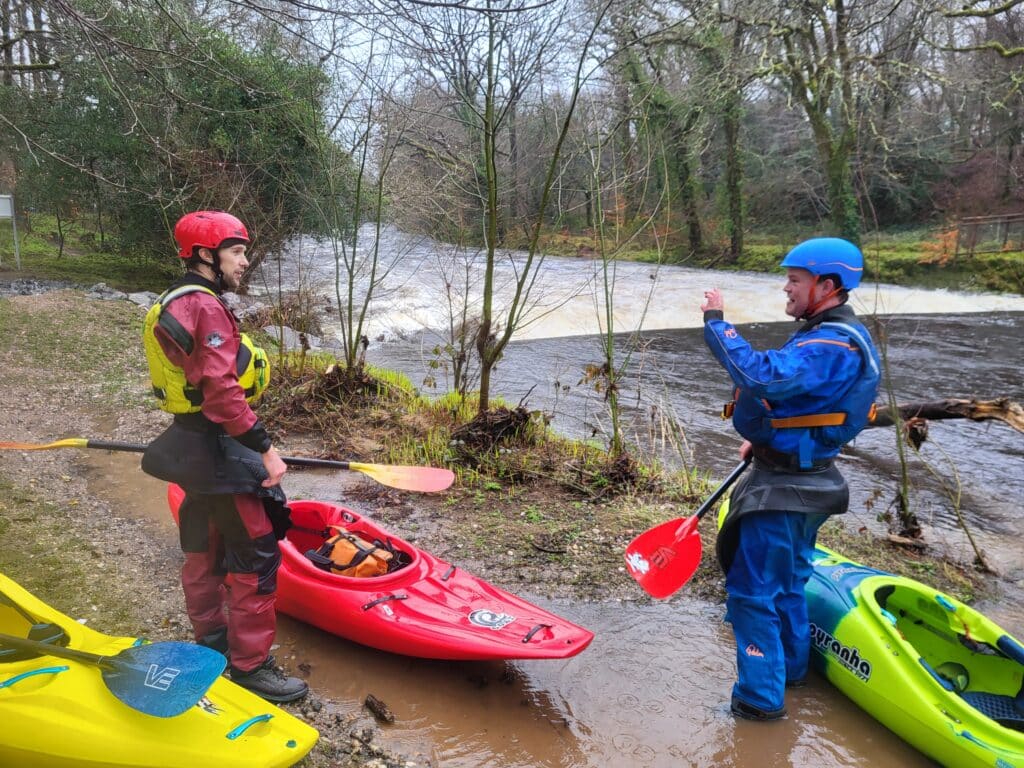
5. The need for immediate feedback
The positives
People with ADHD often crave instant feedback. It’s how many people learn, stay motivated, and feel connected to progress. That’s one reason kayaking is such a satisfying sport: the river responds immediately. Nail a line, and it feels smooth and wonderful. Miss a move, and you will know about it.
This immediacy fuels motivation. Many paddlers with ADHD become relentless in their pursuit of improvement, lapping a feature or repeating a move again and again until they get it right. Combine that with high energy levels, and you’ve got a recipe for rapid growth and joyful obsession.
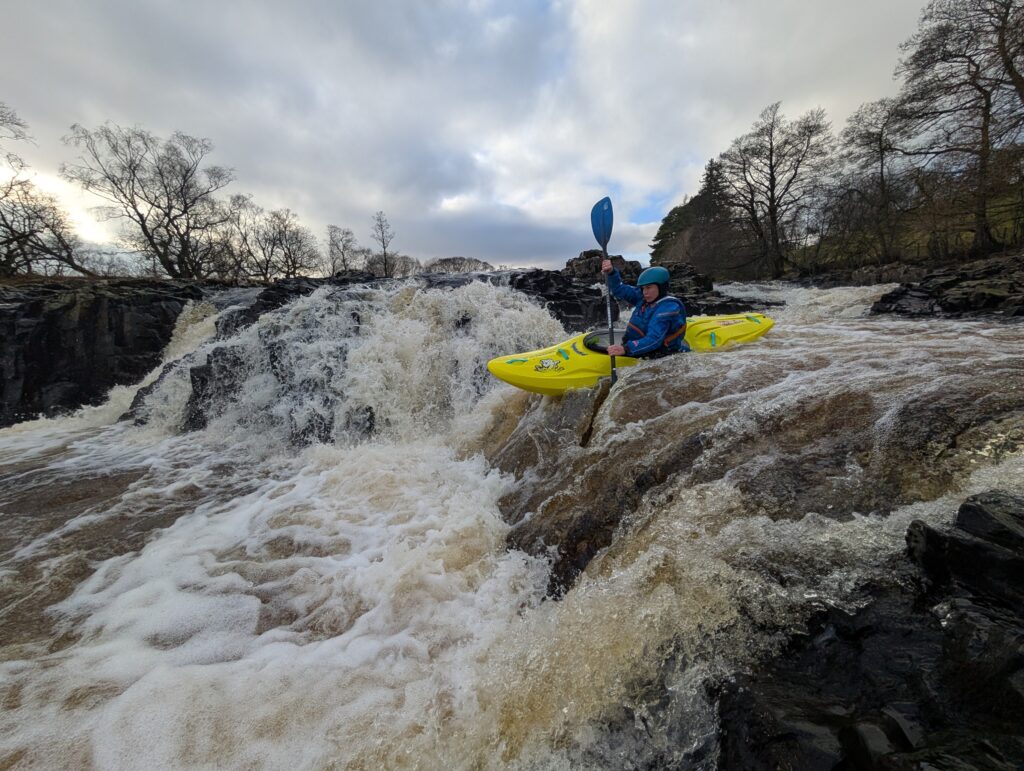
The challenges
The flip side of this is impatience. If progress feels slow or feedback is unclear, motivation can plummet. A missed move might feel like failure. A lack of praise might feel like rejection. When feedback isn’t immediate or positive, it’s easy to spiral into frustration or self-doubt.
This trait also links closely to impulsivity. The desire for quick results can lead to rushing decisions, skipping steps, or abandoning something too soon, especially when the dopamine dries up.
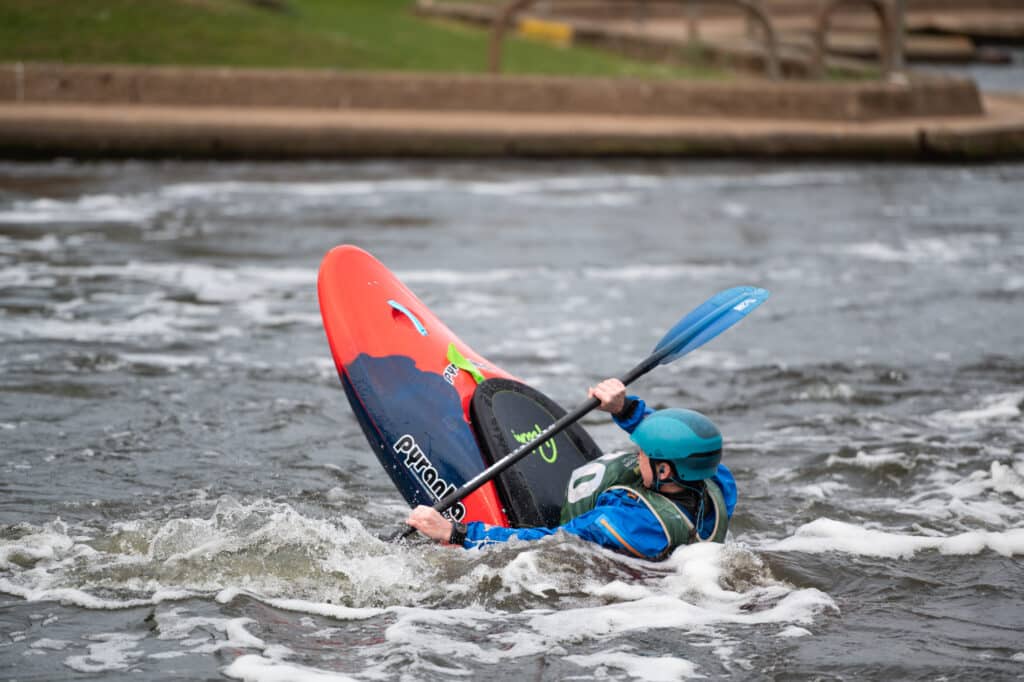
tips to manage it
I used to be so scare of feedback, in case it wasn’t positive. It made me lose motivation to try and really affected my enjoyment of the sport. But I really worked on my mindset and now feel much more open to feedback. I would recommend reading my article on building a growth mindset if you would like to work on this.
Now, I lean into the moments when motivation is high. When I am in the right mood for learning, I fully embrace it. I set clear goals, ask for feedback from friends, and use video analysis to see what I can’t always feel. Watching myself paddle, even when it’s messy, helps me learn faster and stay engaged.
On days when feedback feels hard to hear, I shift focus. Instead of chasing improvement, I chase joy: the feel of the water, the laughter in the eddy, the beauty of the river. Not every session needs to be about progress. Sometimes, just showing up is enough.
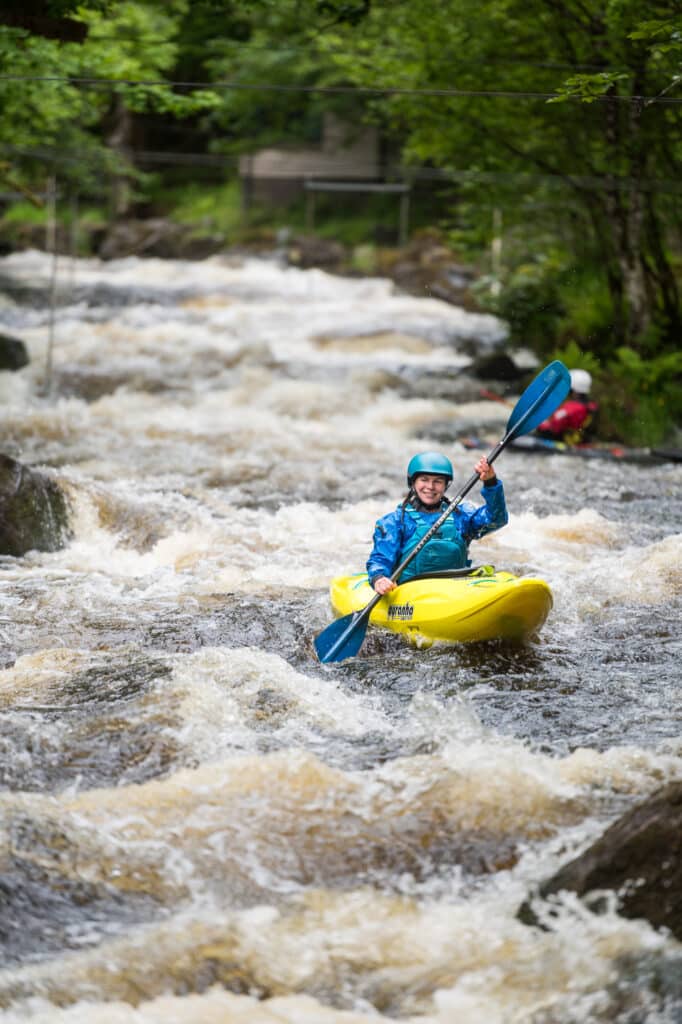
Conclusion
ADHD isn’t a flaw to fix, it’s a lens through which we experience the world differently. On the river, those traits can be both challenging and beautiful. One day you can experience joy in the smallest of moments and find peace in the bliss of being fixated of learning a new move. The next day your racing thoughts and impulsivity lead to mistakes which you spend the rest of the day fixating on. You cannot have the positives without also the challenges. Life is a journey, there is so much to learn along the way. Having ADHD might mean that you are take a slightly different path on that journey but the opportunity to learn is still there.
I didn’t write this article to offer a diagnosis or a cure. I wrote it to share what I’ve learned, to celebrate the quirks and complexities of neurodivergent paddlers, and to remind anyone who’s ever felt “too much” that they’re not alone.
Kayaking has taught me patience, resilience, and the importance of surrounding yourself with the right people. It’s taught me so much about myself and helped me to celebrate embracing being who you are. If you see yourself in any of the traits that I’ve described, I hope you find comfort and maybe even a little joy in knowing that you are certainly not alone.
Happy ADHD Awareness Month and as always – happy paddling.
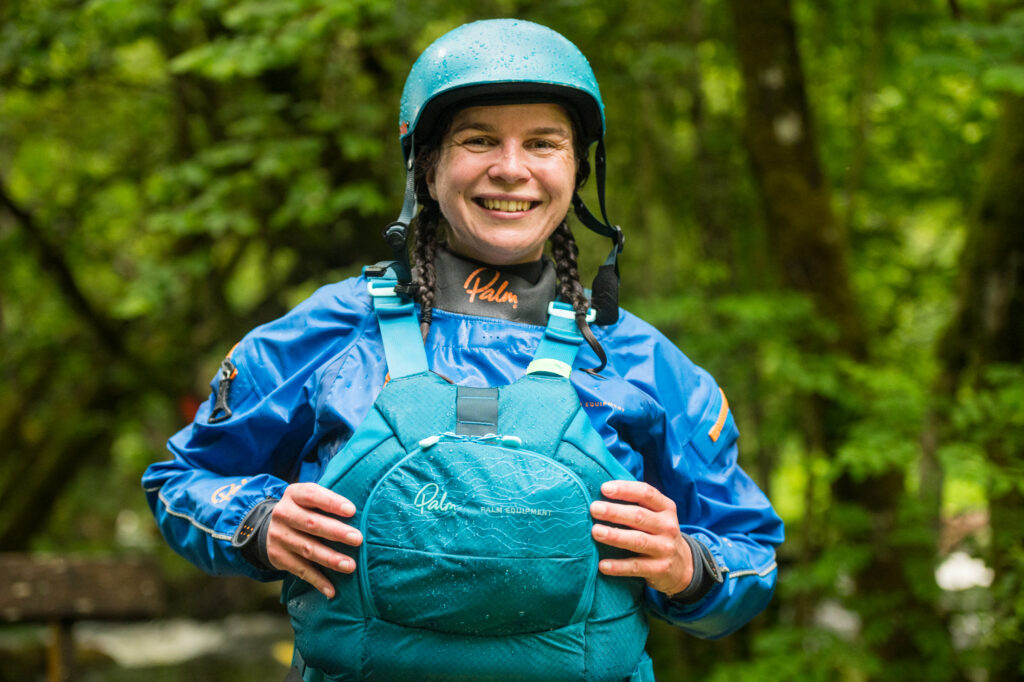
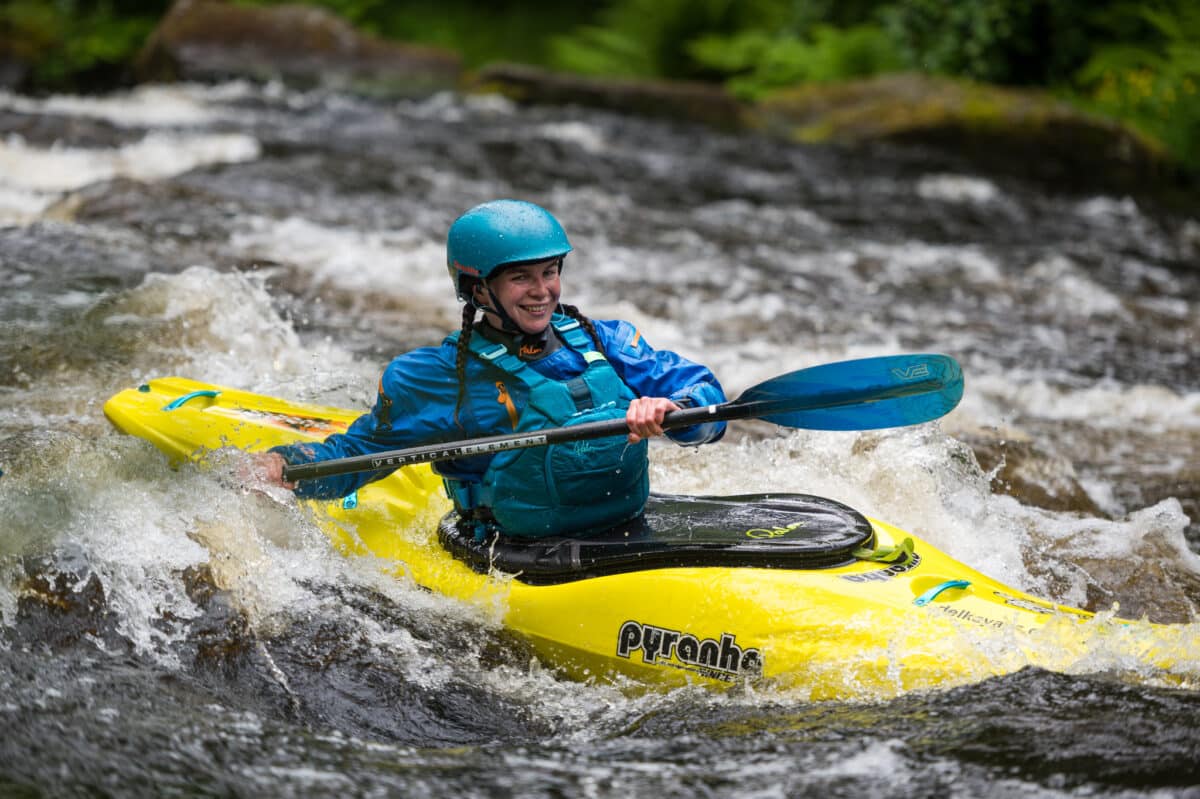
2 replies on “ADHD in White Water Kayaking: The Positives and the Challenges”
Being a parent of a neurodiverse child and being way on the spectrum myself this is so relatable
Only got diagnosed last year.
I’m fifty now and I actually thank the way my brain work. The way is looks at risk, reward and challenge. I doubt I would have done half as much paddling if I wasn’t blessed with a ND brain. Pretty cool eh.